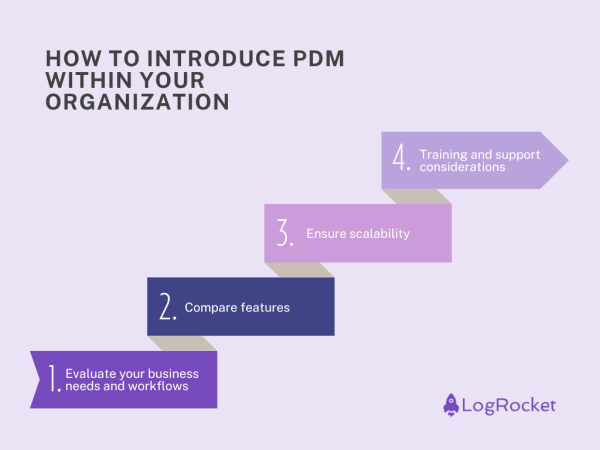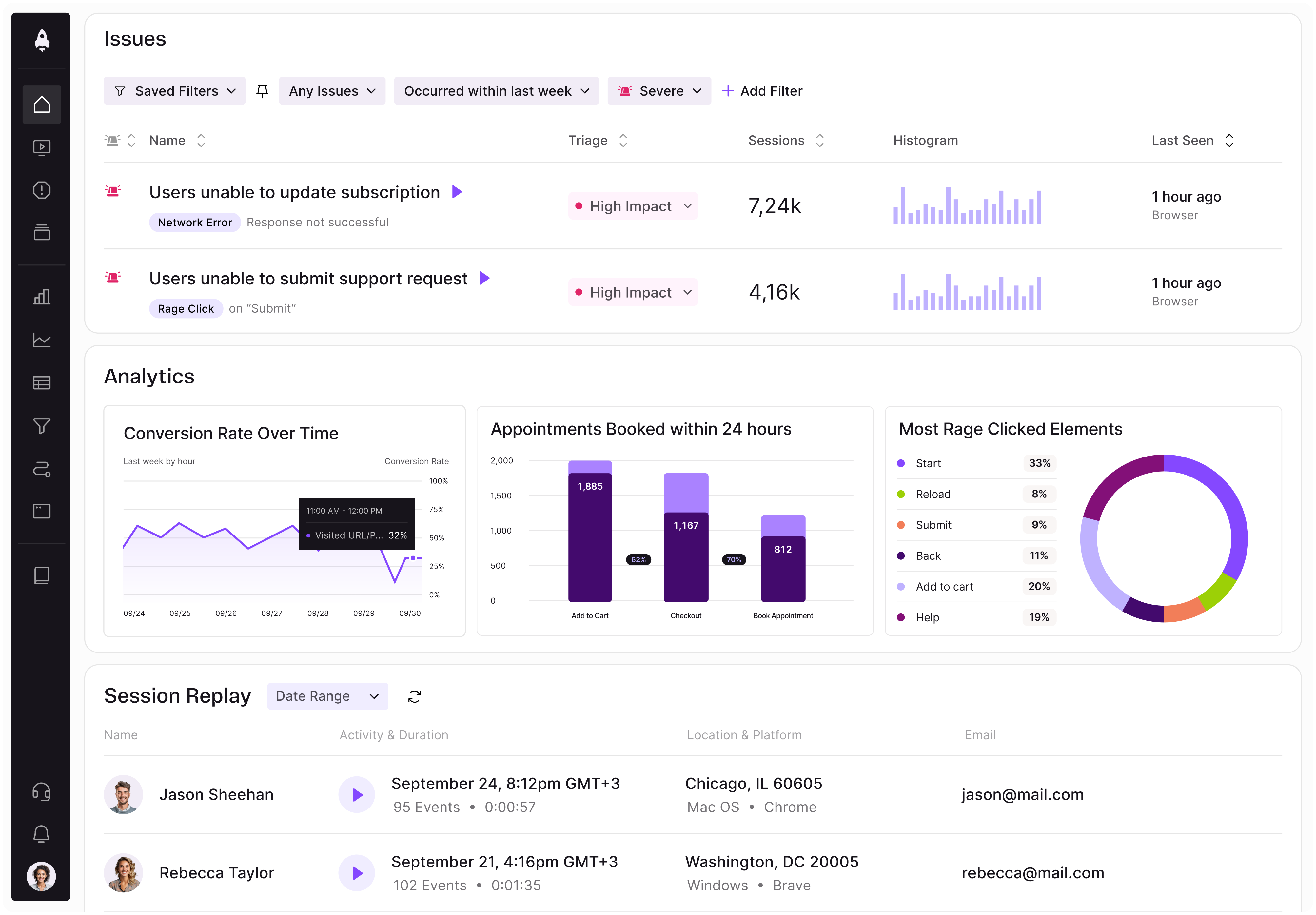Someone told me once that if you don’t track something, it might as well be non-existent. However, the complexity of modern product development requires a structured approach to ensure that product data remains accurate, consistent, and accessible to all relevant stakeholders.

Poorly managed data can end up telling the wrong story or prevent access to critical insights. This is where product data management (PDM) becomes critical.
But what exactly differentiates PDM from related concepts like product lifecycle management (PLM) and product information management (PIM)? And how does it intersect, or differ, from roles like data product managers and practices such as data-driven product management?
This article explores these questions and outlines the steps for introducing PDM into your product team.
PDM is a structured approach to managing the data and documentation related to a product throughout its lifecycle. This includes everything from design specifications and CAD files, to bills of materials (BOMs), testing results, and version histories. A PDM system ensures that all stakeholders, from engineering to marketing, have access to the most up-to-date and accurate product data.
By introducing PDM into your product team, you can take advantage of the following benefits:
PDM ensures version control and accuracy in design and development files. This way, if something breaks and the error remains unnoticed for a while, you’re able to track when the issue was initially introduced.
How to achieve it: Rely on software that has version control built into its core DNA. This could be Office 365, G Suite, or Confluence.
When PDM is at its peak, you have seamless communication between cross-functional teams. Instead of disrupting peoples’ days with tiresome meetings, PDM keeps data in dedicated, easy-to-find documents.
How to achieve it: Teach your team where information lives and how to update it as necessary. Avoid holding meetings to discuss information that you can easily find in a collaborative place.
With a centralized repository for all product-related data, decision-makers can choose the best course of action while staying informed on historical data and projected trends.
How to achieve it: It’s all about having the data structure so everything can be found easily. AI-powered searches using LLMs can summarize data and give you a direct answer to your queries.
With good PDM you can streamline and automate paperwork. That said, you still need to ensure that every process component is met. Dropping bureaucracy can increase your speed in the short-term, but make sure that you don’t overlook issues that could delay future roll-outs.
How to achieve it: You can use either automation in Jira (where you can’t close a ticket before requirements are met) or a document automation software like Docupilot in order to formalize the documentation process and enforce it.
To help you better understand PDM, this section outlines how it differs from related roles and systems.
A data product manager is a special type of technical product manager that oversees the creation, management, and optimization of data products (e.g., dashboards, and analytics tools) that serve internal or external users. They focus on making data more accessible and actionable for decision-making. Another one of their key focuses is reducing data storage costs and looking for innovation that allows other employees of the company to get actionable insights easier and quicker.
So, as you can see, although they share the same words, product data management and data product manager are very different positions. The first involves managing, dare I say, the quality, efficiency, usefulness, and flow of documentation related to how the product is developed over time.
On the other hand, a data product manager looks at the “raw” data that comes in from the product and transforms it into readable insights that anyone in the company can use. This varies from an advisory to full-on delegation role, but in essence, it has nothing to do with maintaining documentation.
This approach uses customer feedback, usage analytics, and market trends to inform product decisions. Data-driven product management focuses on identifying opportunities, prioritizing features, and optimizing products based on data insights. So if the data product manager ensures that data can be turned into actionable insights, data-driven product management is simply making decisions based on those insights.
Data-driven product management differs from PDM, but they’re closely intertwined. Data-driven product management can use both product usage data as well as observations stored in documentation that you collect via PDM. For instance, I recently released a feature that boosted my target metric by 40 percent as I could benefit from cataloged experiments from other PMs in similar areas of the product.
PLM encompasses the entire lifecycle of a product: from conception to disposal. A PLM system manages not only data but also processes, workflows, and collaboration throughout a product’s lifecycle.
PDM is a subset of PLM, focusing specifically on managing product data, whereas PLM encompasses a broader scope, including strategy, compliance, and resource allocation. PDM systems are often used within engineering teams, while PLM systems span multiple organizational levels.
PIM systems manage marketing and sales data about products, such as descriptions, images, and pricing. These systems ensure that product information is consistent across sales channels. This helps maintain a coherent brand identity and messaging, as well as the flow of users between various product touchpoints.
PIM is customer-facing and focused on marketing, while PDM is internal and focused on engineering and development data. PIM deals with how products are represented to customers, whereas PDM ensures that products are developed and documented effectively.
Now that you understand how PDM differs from related roles and systems, use the following steps to start using it within your organization:

You should begin by assessing your business requirements and workflows. Understanding your specific needs ensures that the selected PDM software aligns with your operations and addresses key pain points.
Make sure to do that with a community, so the future PDM system serves the needs of various teams in the company. It would be counterproductive, to say the least, if you end up in an org where multiple different PDMs are introduced.
You might consider SOLIDWORKS PDM, Autodesk Vault, or Teamcenter by Siemens to name a few.
Once you know what you need and narrow the PDM systems to the ones that meet your criteria, you can review and compare their features. Focus on critical capabilities such as version control, integration with other systems, and the software’s user interface to ensure it meets your functional and technical expectations. Ideally your PDM seamlessly integrates with your existing software so you can use automation with checks and boundaries.
Evaluate the scalability of the software to ensure it can grow alongside your business. The solution should be flexible enough to accommodate increased data volumes and support evolving processes in the future. This way you can implement the PDM once and have it alongside you for as long as you want, without being forced to switch systems when the old PDM stops keeping up.
Once you introduce the PDM, even if seamlessly automated and enforced across the board, providing comprehensive training for all users is a must.
Training should be tailored to different roles within the organization to address specific needs. Additionally, partnering with the software provider for ongoing technical support and regular updates ensures that your team has access to expert assistance and that the system remains up-to-date with the latest features and improvements.
Be sure to accommodate different ways of learning: live demos, written instructions and, ideally, “how-to” videos to accommodate different types of learning.
Product data management (PDM) is easily mistaken for other similar data-oriented areas and systems. However, ensuring that data is accurate, accessible, and actionable is an investment that pays you back quickly and keeps on giving.
By implementing an effective PDM system, you can foster collaboration, improve decision-making, and accelerate your time-to-market. Whether you’re managing complex engineering data or streamlining cross-departmental workflows, PDM is an essential tool for product management success.
To learn about other systems to improve your product management work, as well as simply grow your product skills, be sure to come back for my next piece soon. Until then, happy, successful and effective product development!
Featured image source: IconScout

LogRocket identifies friction points in the user experience so you can make informed decisions about product and design changes that must happen to hit your goals.
With LogRocket, you can understand the scope of the issues affecting your product and prioritize the changes that need to be made. LogRocket simplifies workflows by allowing Engineering, Product, UX, and Design teams to work from the same data as you, eliminating any confusion about what needs to be done.
Get your teams on the same page — try LogRocket today.

A practical five minute revenue estimation method to help product managers compare ideas, drop low impact features, and prioritize smarter.

A practical guide for PMs who want to stop being bottlenecks, delegate smarter, and lead teams effectively with a clear ownership framework.

Stop letting unreliable data block features. Treat data as inventory to track quality, ownership, and ship with confidence.

Learn why slide decks slow teams down and explore better tools like whiteboards, PRDs, and prototypes to improve collaboration and alignment.